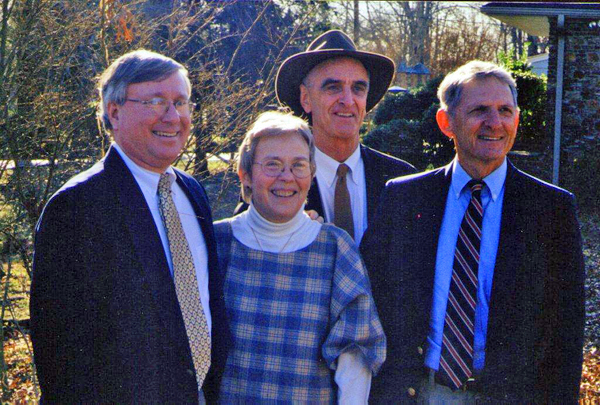…one woman and three men saw a good place. They said, “Let’s build a school and a camp here”. They called it High Meadows.
It was pretty much that simple.
High Meadows was founded by four friends in 1973: Jody Holden, Jay Dickerson, Mike Drake, and Bill Crawford. They purchased 40 acres of land in what was then rural Roswell, Georgia to create an environment emphasizing exploration, discovery, and multi-age learning.

Originally High Meadows offered a camp, preschool, and kindergarten to the children of the North Fulton area. Through the years, High Meadows has grown into a unique, outstanding, nationally-accredited educational and recreational environment serving children in pre-school through eighth grade.
To ensure we honor our land and those that came before us, High Meadows School & Camp has officially adapted this Land Acknowledgement:
High Meadows School & Camp acknowledges that we are meeting on native ground, the ancestral land and home of the Cherokee and Muscogee Creek people, who were forcibly removed from their homeland in the1800s. This acknowledgement resists the erasure of indigenous histories and ongoing colonization. High Meadows recognizes that this statement is not enough. We are thankful to be able to freely work, play, and learn on this land. Our hope is to inspire action toward a sustained commitment to the land, indigenous rights, and cultural equity.
Colonialism is a present and ongoing process and we will be mindful of our participation in that process. We encourage readers and listeners of these words to take their own personal steps toward reconciliation with the land and its original caretakers. We at High Meadows commit to honor the land itself and the Cherokee and Muscogee Creek people through sustained action, programming, and learning experiences. This statement is and must be the beginning and not the end.
Our property is rich in history. The Hightower Trail, a major American Indian trading path that ran from the mountains of northwest Georgia to near Augusta, crossed through our forest. We have found relics of this early history that we work into our native lore classes. To honor those who came before us, when appropriate we incorporate the past into our program. Our tipi, though not representative of dwellings in this area of the country, helps remind us of the rich traditions and important lessons of the earliest people who enjoyed High Meadows.
Before being purchased by our founders, the property was a farm. The Franklin Family lived here and worked the land. Two original house structures are still in use: the Stone Cottage which is used as the Camp Office and the Franklin House, the School Office. There was an old functioning stone well that no longer stands but its pieces are used as a center piece in Senior Camp. We often find remnants of farm life when we dig into the ground or explore overgrown places in our woods.
One of the original livestock barns was transformed into a performing space including a rustic stage and loft where many barn cats came to nap. This became known as the Barn Theatre. It was rebuilt in 1988 by our community in a traditional barn-raising event, using early American building traditions.
Farm animal care and gardening were and continue to be important in our programs. Over the years campers have had the opportunity to raise and care for chickens, fish, goats and sheep, rabbits, ponies, and even pigs and a bull. Memaw, the mother of founder Bill Crawford, lived on our campus for many years and helped establish many wonderful gardens that are still part of our education and recreation.
The Tire Swing was one of the first additions made by the founders. They chose a beautiful Box Elder Tree placed perfectly in the center of campus. This tree was the inspiration for the High Meadows logo. Though the Box Elder no longer stands, a beloved swing on the Low Meadow is still enjoyed by all, promoting imagination, friendship, and responsible risk-taking.